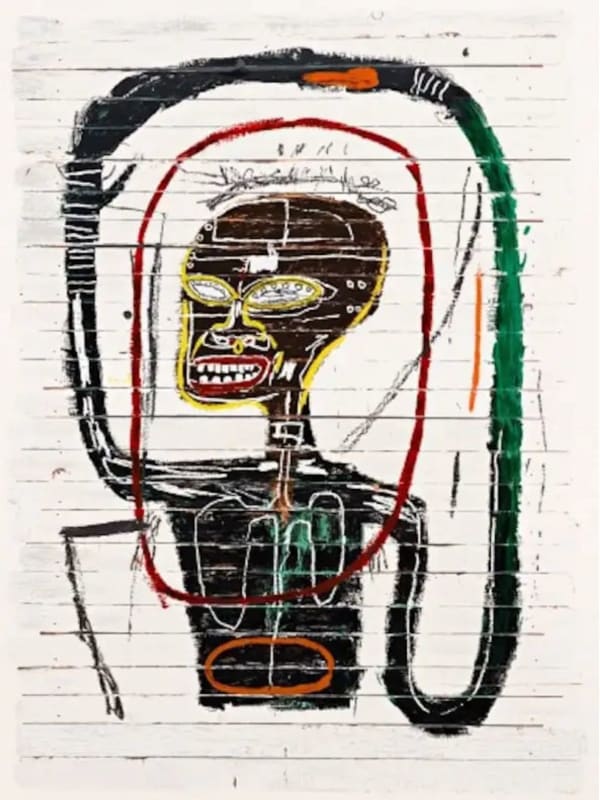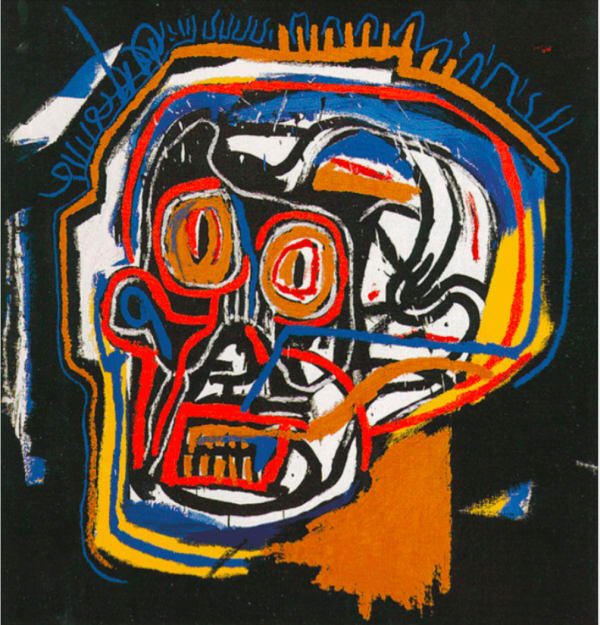Jean-Michel Basquiat was an American artist born in 1960, in Brooklyn, New York. He emerged as one of the most important and influential figures in contemporary art during the late 20th century. Of Haitian and Puerto Rican descent, Basquiat was raised in a culturally rich household that nurtured his creativity from a young age.
In the late 1970s, Basquiat first gained notoriety as a graffiti artist under the name SAMO, scrawling cryptic and poetic messages across buildings in Lower Manhattan. By the early 1980s, he shifted his focus to painting, quickly rising to fame within the New York art scene. His work, known for its raw energy and complex layering of text, symbols, and figures, often addressed themes such as race, identity, power, and social injustice. Basquiat’s unique visual language fused elements of street art with historical and cultural references, including African art, jazz, anatomy, and classical painting.
Basquiat's collaboration with Andy Warhol in the mid-1980s brought him even greater attention, though it also drew mixed reviews. Despite the controversy, their partnership underscored Basquiat’s significance in the art world and highlighted the intersection of fame, commerce, and creative expression. Throughout his short but prolific career, he became a leading figure in the Neo-Expressionist movement and one of the few young Black artists to gain widespread recognition in a predominantly white art world.
Tragically, Basquiat died of a heroin overdose on August 12, 1988, at just 27 years old. Despite his brief life, his influence has endured, and his works are now considered some of the most important and valuable in modern art history. His legacy lives on not only in galleries and auction houses but also in music, fashion, and popular culture, where his impact continues to resonate.




